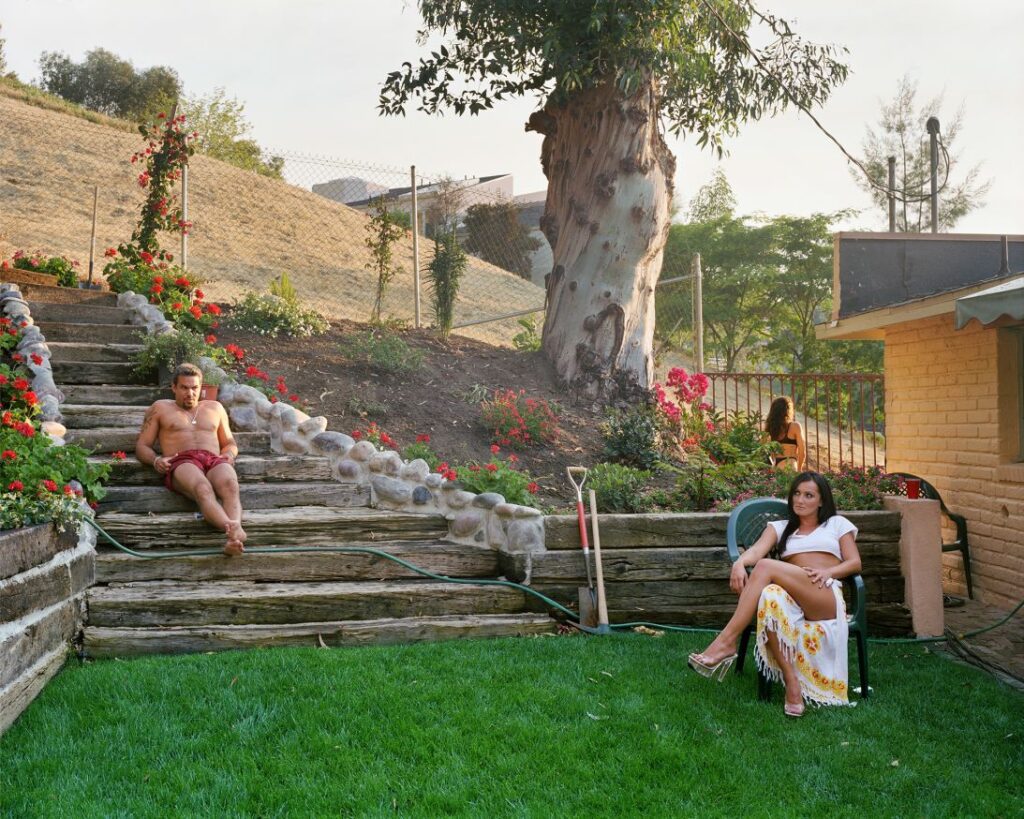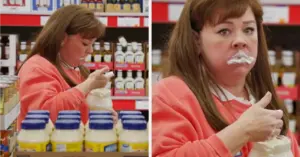
The world of adult film often intertwines with the ordinary, as captured by photographer Larry Sultan in his evocative series that explores suburban homes transformed into adult film sets. Sultan’s work sheds light on the paradox of these locations, where the mundane meets the theatrical, creating a unique lens through which to view contemporary culture.
Sultan’s journey began in the late 1990s during a photo shoot for Maxim magazine that focused on the daily life of adult film star Sharon Wild. This project serendipitously brought him back to his childhood neighborhood in California’s San Fernando Valley, an area recognized for its affordability and proximity to Los Angeles, which had become a hub for adult film production.
Over several years, Sultan photographed homes rented by adult film companies, capturing scenes that juxtaposed everyday life with the explicit nature of the industry. The results reveal a world that feels both familiar and alien, with interiors that echo a middle-class American lifestyle while simultaneously serving a different narrative. “It was like this parallel reality, and he was really fascinated by it,” said Yancey Richardson, Sultan’s gallerist, in a recent phone interview.
Exploring the Intersection of Domesticity and Performance
Sultan’s book, The Valley, published in 2004, features images that highlight the strangeness of homes temporarily transformed for adult entertainment. Sultan noted that these spaces seemed abandoned, as if families had left in haste. The interiors he captured, with their mundane details—like magnets on refrigerators and ordinary decor—served as backdrops for performances that were anything but ordinary.
His wife, Kelly Sultan, who was present during the Maxim shoot, recalled that the home itself piqued his interest. “What was immediately of interest to him was the home itself: the details of daily life that were still alive in the home and being used as a backdrop for this alternative family that had moved in for the day,” she explained.
Throughout the series, the act of sex is often relegated to the background or suggested subtly. Bodies are glimpsed through windows or reflections, cropped out of frame, or humorously obscured by plants and furniture. “He was looking for the details on the sets and in the homes for clues to excavate this interior psyche that we all have,” said photographer Rebecca Bausher, who assisted Sultan during this period.
Creating an Anti-Dramatic Aesthetic
Sultan’s work challenges conventional representations of adult film, focusing instead on the incongruities within production settings. He captured curtains pushed back to reveal set walls, furniture carelessly arranged, and the illusion of suburban life disrupted by studio props.
One notable portrait from the series features Wild making direct eye contact with the camera, a rare moment of acknowledgment between actor and photographer. “I think of myself on porn sets as documenting fictions,” Sultan remarked in an interview with the Oakland Museum of Contemporary Art in 2003. He described his artistic approach as creating “anti-dramatic moments,” focusing on the theatricality of the sets rather than the explicit actions occurring off-camera.
Sultan’s fascination with ordinary details extended to the aesthetics of the scenes he captured. “When I see some purple curtains, I run for my camera,” he said, expressing his delight in the juxtaposition of vibrant colors and everyday objects. His portrait of Wild, with its striking visual elements, stands as a testament to Sultan’s unique vision and his ability to find beauty in the most unexpected places.
As part of the ongoing celebration of his work, the portrait of Wild is featured in Yancey Richardson Gallery in New York as part of the gallery’s 30th anniversary show. Sultan’s legacy continues to provoke thought about the intersections between domesticity, performance, and the complexities of human desire.







